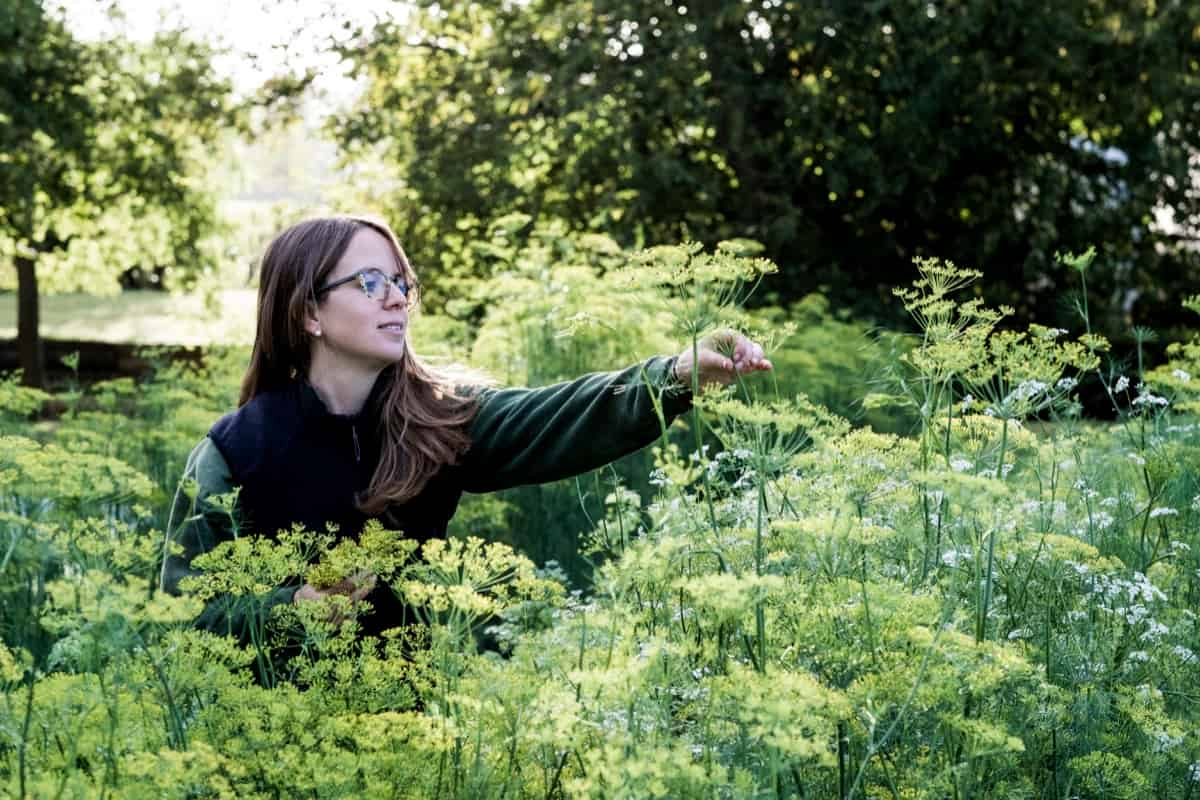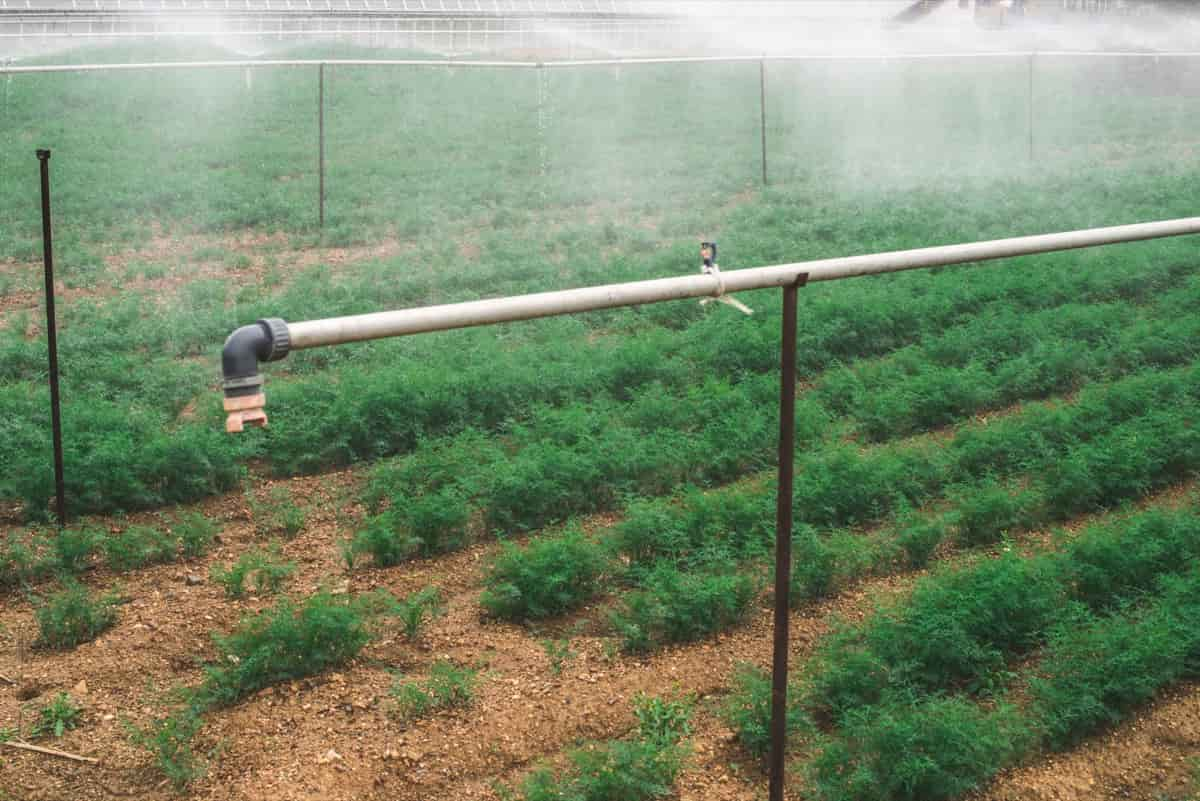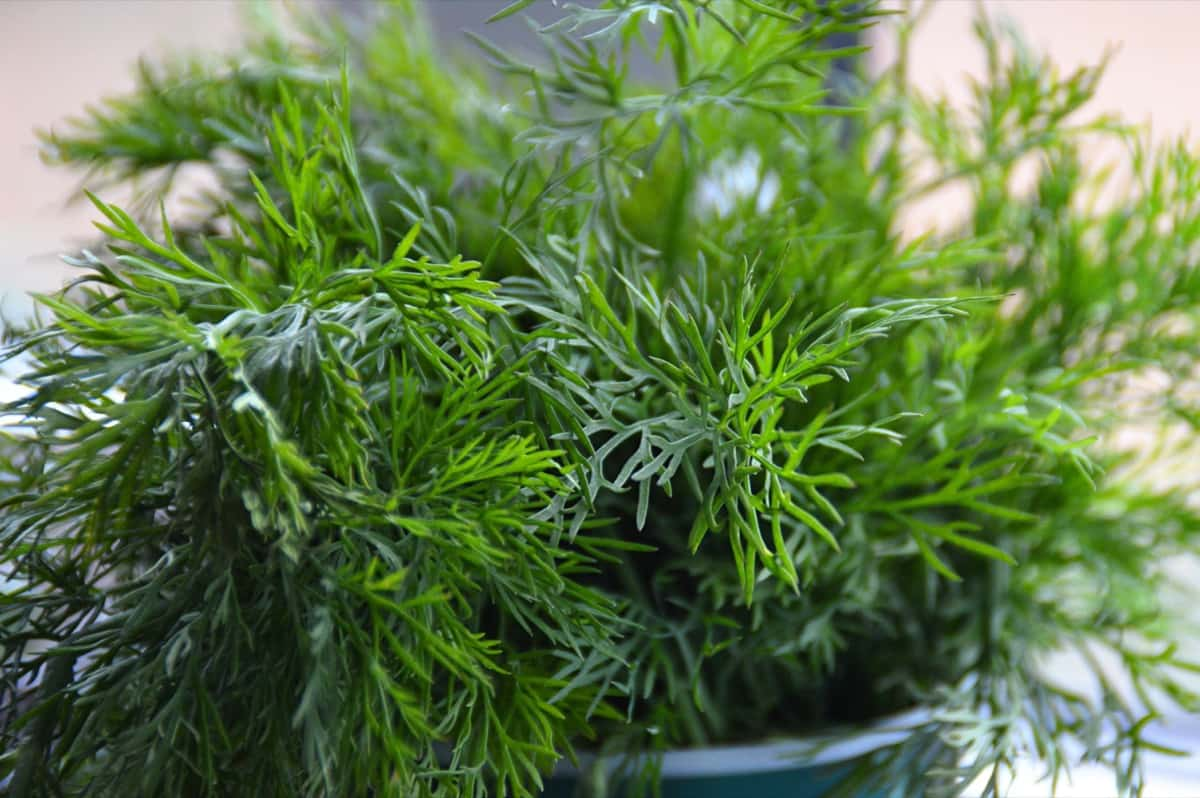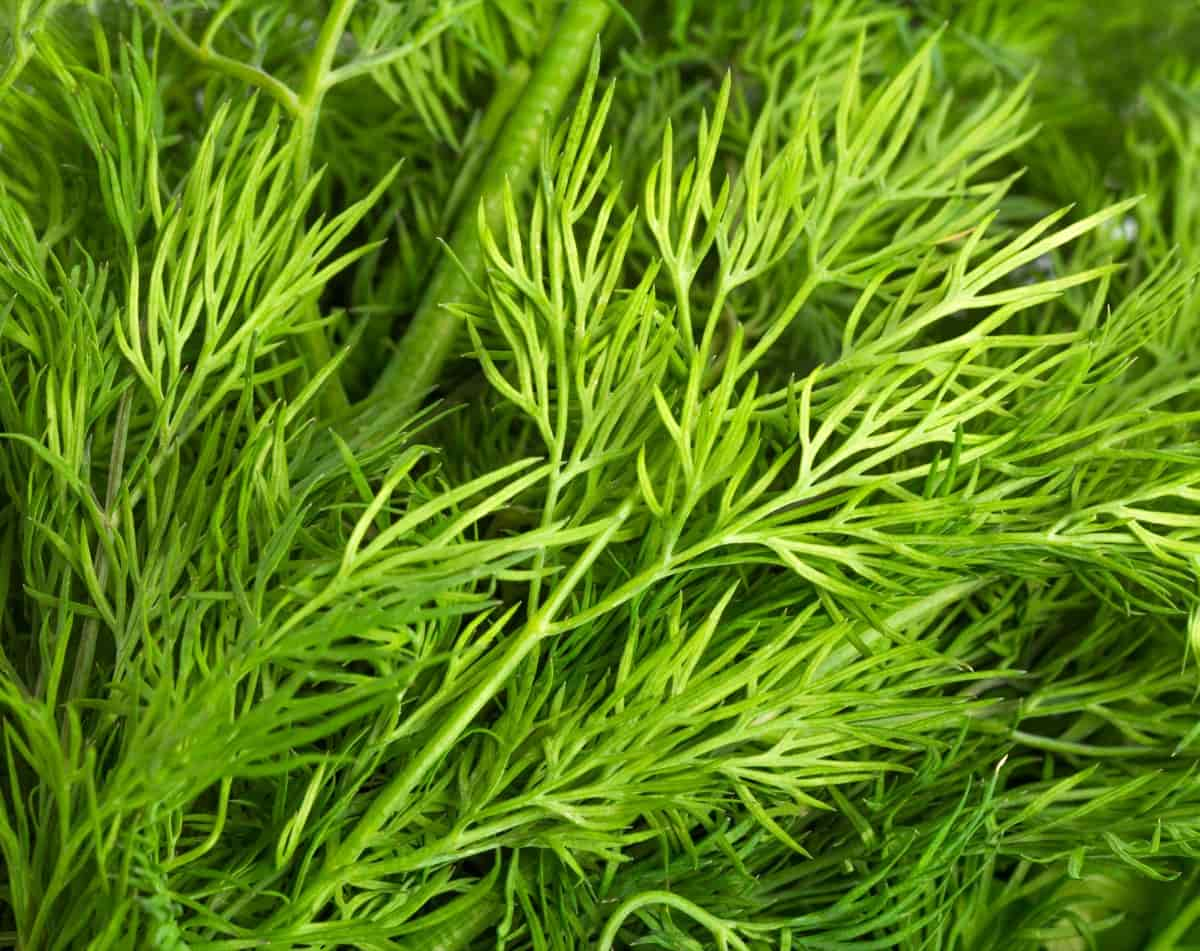Growing and caring for organic Dill can be a rewarding experience for any gardener. This herb is a delight in your garden with its delicate foliage, distinct aroma, and versatile culinary uses. If you’re a seasoned gardener or just starting with your green thumb, Dill is a versatile and aromatic herb that deserves a place in every garden.

Growing organic Dill requires attention and care but is an enjoyable endeavor that yields tasty rewards in both gardening satisfaction and culinary delight. Start cultivating this fragrant herb today and add a touch of freshness to every meal.
How to Grow and Care for Organic Dill
Step-by-step Guide to Planting Organic Dill from Seeds
Planting organic Dill from seeds is a rewarding and straightforward process. First, choose a sunny spot or prepare a container for indoor planting. Dill prefers full sun and well-drained soil. Next, prepare the soil by loosening it with a garden fork or shovel. Remove any weeds or debris that may hinder the growth of your Dill plants. Now, sow the Dill seeds directly into the soil or container. Make sure to space them about 12 inches apart to allow room for their eventual growth.
Keep the soil moist but not overly saturated during germination. You should see sprouts emerging from the soil surface within one to two weeks. As they grow larger, thin out any overcrowded seedlings to promote healthy development. Once your Dill plants have reached about six inches tall, you can start harvesting leaves as needed while leaving some on each plant to continue growing. Remember that regular watering and occasional feeding with organic fertilizers will help maintain healthy growth throughout the season.
Dill growing conditions
Dill, a fragrant and versatile herb, is relatively easy to grow if you provide the right conditions. Dill thrives in full sunlight, so choose a location in your garden that receives at least six hours of direct sunlight daily. If you’re growing Dill indoors, place it near a sunny window where it can soak up the rays. Dill prefers well-drained soil that is rich in organic matter. While Dill requires regular watering to establish strong roots, be careful not to overwater. Dill thrives in cool climates with temperatures ranging from 15°C to 21°C.
In case you missed it: How to Grow Dill from Seed to Harvest: Soil, Propagation, Planting, and Care

Higher temperatures may cause bolting, where the plant prematurely goes into flower and stops producing foliage. When planting Dill seeds or transplants, space them about 12-18 inches apart. This will allow enough room for air circulation and prevent overcrowding. Dill is generally pest-resistant but can occasionally attract aphids or spider mites. Keep an eye out for any signs of infestation and address them promptly using organic pest control methods if necessary.
How to Propagate Organic Dill from Cuttings
Dill is a versatile herb that adds flavor to various dishes. If you want to expand your Dill Garden, propagation from cuttings can be an effective method. To begin, choose healthy and mature Dill plants for cutting. Look for stems that are sturdy and free from any signs of disease or pests. Once your cuttings are ready, fill a small container with organic potting soil. Make sure the soil is well-draining to prevent waterlogged roots.
Dip the bottom cutting end in rooting hormone powder, if desired, as this can enhance root development. Create small holes in the potting soil and gently insert the Dill cuttings into them. Slowly press the soil around the base of each cutting to ensure good contact. After planting, mist the cuttings with water to provide moisture without saturating them excessively. Place the container in an area with bright but indirect sunlight.
Keep an eye on the moisture level of the soil and mist whenever necessary to maintain adequate humidity for root development. Avoid overwatering as it can lead to rotting. You should start seeing new growth emerging from your propagated Dill cuttings within a few weeks. Once they have established roots and grown enough foliage, you can transplant them into larger pots or your garden bed.
Best Organic Soil Mix for Growing Dill Indoors
Choosing the right soil mix is crucial for success when it comes to growing Dill indoors. Organic Dill thrives in well-draining soil rich in organic matter and nutrients. Start with a high-quality potting mix specifically formulated for herbs or vegetables. To improve drainage, add perlite or vermiculite to the potting mix. These materials help prevent waterlogging and allow air circulation around the roots of your Dill plants.
Next, incorporate compost into the soil mix to provide additional nutrients and beneficial microorganisms. Homemade compost or store-bought organic compost will work equally well. Consider adding bone meal or fish emulsion to the soil mixture for added fertility. These natural amendments are rich in phosphorus and other essential nutrients that promote healthy growth in Dill plants. Ensure moisture retention by including coconut coir or peat moss in your soil mix. These ingredients help retain moisture while still allowing excess water to drain away.
In case you missed it: How to Grow and Care for Organic Parsley: Planting Instructions

Watering Schedule for Organic Dill in Different Climates
Watering is crucial to caring for organic Dill, especially in different climates. The watering needs of this aromatic herb may vary depending on the weather conditions in your region. Dill plants require more frequent watering in hot and dry climates, such as in arid regions or during summer months.
Aim to water them deeply at least twice a week, ensuring that the soil remains consistently moist but not waterlogged. On the other hand, if you live in a cooler climate or experience regular rainfall, reduce the watering frequency to avoid overwatering and potential root rot. Check the soil’s moisture level regularly by inserting your finger into it up to about an inch deep. It’s time to water your Dill plant if it feels dry at this depth.
Organic materials like straw or shredded leaves make excellent mulch choices for maintaining optimal soil moisture levels. Remember that consistency is key when watering any plant. Always strive for balance – not too much water nor too little – to ensure healthy growth and vigor in your organic Dill plants throughout different climates.
Organic Methods for Controlling Weeds Around Dill Plants
Weeds can be a persistent problem in any garden, but when it comes to growing organic Dill, it’s important to find natural methods for weed control. Regular cultivation is one of the simplest ways to prevent weed growth around your Dill plants. Gently loosen the soil with a hand cultivator or hoe, being careful not to disturb the roots of your Dill plants. This will disrupt weed seedlings and make them easier to remove.
Mulching is another great organic method for controlling weeds around Dill plants. Apply organic mulch around each plant, ensuring not to cover the stem directly. Mulch helps suppress weed germination by blocking sunlight and conserving moisture in the soil. Hand-pulling weeds may be necessary occasionally, especially if they start encroaching on your Dill plants. Be sure to pull weeds out by their roots, not damaging nearby plants.
Consider using companion planting as an effective way to deter weeds naturally. Some good companions for Dill include marigolds and nasturtiums, which act as natural pest repellents while crowding out unwanted weeds. By implementing these organic methods for controlling weeds around your Dill plants, you’ll create an environment that fosters healthy growth without relying on harmful chemicals or pesticides.
How to Care for Organic Dill in Containers
Caring for organic Dill in containers is a great way to enjoy this flavorful herb, even with limited garden space. First, choose the right container for your Dill plant. Ensure it has good drainage holes and is 12 inches deep to allow for root growth. Fill the container with a well-draining organic potting mix rich in nutrients.
Place your Dill container in an area that receives full sun, as Dill plants need around 6-8 hours of sunlight daily. If you’re growing Dill indoors, consider using grow lights to provide adequate light. Watering is crucial for healthy Dill plants. Check the moisture level regularly and water when the top inch feels dry. To promote bushier growth, pinch off any flower buds on the plant. This will encourage more leaf production and prevent early flowering.
Companion Plants for Organic Dill to Promote Growth
Companion plants can play a crucial role in promoting the growth of organic Dill. You can create a harmonious garden ecosystem that benefits all crops by strategically selecting plants that complement Dill’s needs. One excellent companion plant for Dill is chamomile. Not only does chamomile attract beneficial insects like bees and butterflies, but it also helps deter pests such as aphids and spider mites. Plus, its delicate flowers add a touch of beauty to your garden.
In case you missed it: How to Grow and Care for Organic Cress: Planting Instructions

Another great choice is marigold. These vibrant flowers bring color to your garden and act as natural repellents against nematodes and other harmful pests. Marigolds emit a strong scent that repels unwanted insects, attracting beneficial ones like ladybugs. Consider planting legumes like peas or beans nearby to improve soil fertility around your Dill plants. Legumes have nitrogen-fixing abilities, converting atmospheric nitrogen into usable forms for plants.
This process enriches the soil with essential nutrients that support healthy growth in neighboring crops like Dill. Herbs such as basil or mint are also fantastic companions for Dill. They help repel pest insects while adding fragrance to your garden space. Additionally, their presence can enhance the flavor of neighboring crops when used together in culinary dishes. Remember to choose companion plants wisely based on their compatibility with Dill’s growing conditions and requirements.
Tips for Pruning and Harvesting Organic Dill Leaves
Pruning and harvesting organic Dill leaves are essential to maintaining a healthy and productive plant. When it comes to pruning, it’s important to regularly remove any yellowing or dead leaves. This not only keeps the plant looking tidy but also encourages new growth. Pinch off these leaves at their base, careful not to damage the surrounding foliage. Harvesting Dill leaves is best done when they are young and tender for optimal flavor.
Start by snipping off individual fronds or leaf stems from the outer parts of the plant using clean garden shears or scissors. To extend your harvest, consider practicing successive harvesting. Rather than cutting all the mature leaves at once, selectively pick a few here and there as needed. This allows younger leaves time to grow and ensures a continuous supply throughout the season. Remember that regular pruning promotes bushier growth while proper harvesting techniques ensure a steady supply of flavorful Dill throughout its growing cycle.
Organic Fertilizers for Nourishing Dill Plants Naturally
Going organic is the way to go when it comes to nourishing your Dill plants. By avoiding synthetic fertilizers and opting for natural alternatives, you promote a healthier environment and enhance the flavor and aroma of your Dill leaves. One excellent organic fertilizer option for Dill plants is compost. Composting kitchen scraps, yard waste, and other organic matter create nutrient-rich soil that can be used to feed your Dill plants.
In case you missed it: How to Grow and Care for Organic Hyssop: Planting Instructions

Spread compost around the base of each plant, ensuring it doesn’t touch the stems directly. Another fantastic natural fertilizer choice is manure. Whether from chickens, cows, or horses, well-rotted manure provides essential nutrients like nitrogen and phosphorus to fuel healthy growth in Dill plants. Mix the manure with water to create a nutrient-rich liquid fertilizer, or apply it as a top dressing around your Dill plants.
Seaweed extract is another organic fertilizer option worth considering. Packed with micronutrients and minerals like potassium and magnesium, seaweed extract helps improve overall plant health while enhancing resistance against pests and diseases. Dilute the seaweed extract according to package instructions before applying it to your Dill plants. Alternatively, you can make an all-purpose organic liquid fertilizer by combining equal parts fish emulsion and worm castings with water.
Common Pests and Diseases of Organic Dill and Their Management
One of the challenges that organic Dill growers may face is dealing with pests and diseases. Although Dill is generally a hardy herb, it can still be susceptible to certain issues. Aphids causing leaves to curl and turn yellow. To control aphids organically, you can introduce beneficial insects like ladybugs or use a homemade insecticidal spray from diluted liquid dish soap. Another troublesome pest for Dill is the tomato hornworm.
These large green caterpillars chew through leaves and can quickly decimate your plants. Handpicking them off the plant is an effective method, or you can use Bacillus thuringiensis, an organic pesticide specifically targeting caterpillars. Fungal diseases can also affect Dill plants. To prevent these diseases, ensure good air circulation around your plants by spacing them properly and avoiding over-watering. If fungal infections occur, spray a solution of neem oil mixed with water onto affected areas as a natural fungicide.
In case you missed it: How to Grow and Care for Organic Angelica: Planting Instructions

Conclusion
Growing organic Dill allows you access to fresh flavors in your cooking and promotes sustainable gardening practices that benefit both our health and the environment. By following these planting instructions and caring tips, you’ll be well on your way to enjoying an abundant harvest of fragrant Dill all season long.
- How to Grow Tomatoes Organically at Home: A Comprehensive Guide
- Organic Gardening on a Budget: Low-Cost Methods and Materials
- Gongura Seed Germination and Planting Methods
- Cabbage Seed Germination and Selection
- Broccoli Seed Germination and Selection
- Asparagus Seed Germination and Variety Selection
- Seasonal Flower Gardening: Best Practices for Spring, Summer, Fall, and Winter
- How to Grow Hibiscus from Flower
- Plantation Ideas for Home Decoration: A Beginners Guide
- Flower Garden Designs and Layouts for Beginners
- Planting and Spacing Techniques in Papaya: A Beginner’s Guide
- Growing Gold: Essential Techniques for Planting Pineapples
- How to Make Kalanchoe Plant Bushy: Home Remedies and Solutions
- 11 Reasons Why Your Gardenia is Not Blooming: Home Remedies and Solutions
- Eco Elegance: The Guide to Designing a Drought-Tolerant Landscape
- Gardening on a Slope: Strategies for Hillside Landscaping
- Nourish and Flourish: Top Organic Mulches for Thriving House Plants
- Everything You Want to Know about Indian Mogra Flower: Discover Uses and Growing
- Green Thumb Success: Expert Tips for Cultivating Greenhouse Pumpkins All Year Round
- Maximize Growth & Flavor: The Ultimate Guide to Companion Planting in Herb Gardens
- How to Control Rhododendron Problems Naturally: Home Remedies and Organic Ways to Fix Them
- Natural Magic: The Remarkable Benefits of Cinnamon for Plants
- Best Steps to Revive Dying Tulip with Natural and Organic Treatment
- 10 Reasons Why Your Angel Trumpet is Not Blooming: Remedies and Treatment
- How to Fix Periwinkle Leaf and Flower-Related Problems: Natural Remedies and Solutions
- How to Fix Zinnias Leaf and Flower Problems: Discover Natural and Home Remedies
- Organic Steps to Induce Lemon Tree Flowers: A Comprehensive Guide
- Bloom Booster: Crafting the Perfect Homemade Bougainvillea Fertilizer
- Optimizing Growth: A Guide to Applying NPK Fertilizer for Potted Plants
- 10 Best Homemade Fertilizers for Rubber Plant: DIY Recipes and Application Method
- How to Boost Female Pumpkin Flowers: Effective Steps for More Flowers and High Yields
- Transform Your Indoor Garden: Top Benefits of Pink Salt for Houseplants
- 10 Best Homemade Fertilizers for Peacock Plants (Calathea): Easy DIY Guide
- Unlock Blooms: 9 Reasons Why Your Potted Chrysanthemum is Not Blooming
- 8 Reasons Why Your Potted Hibiscus is Not Blooming: Fix it with Simple Solutions
- Unlock Blooms: 9 Key Reasons Your Potted Frangipani Won’t Flower